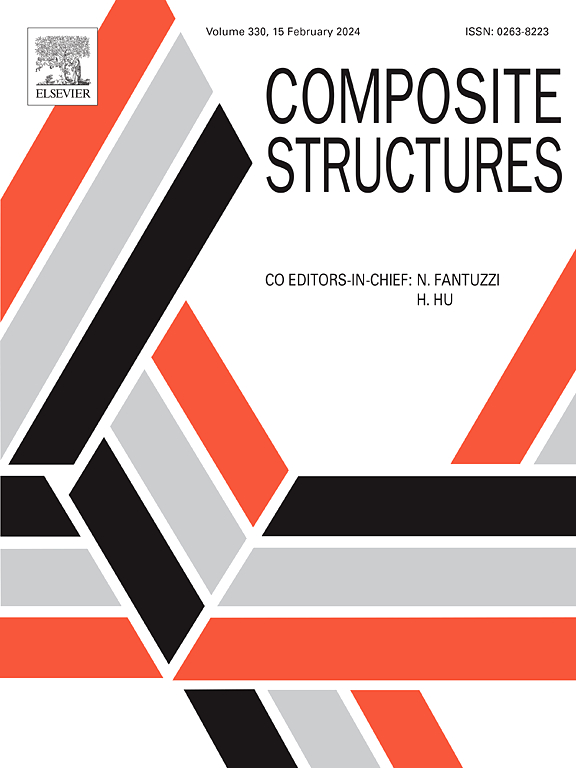Multi-scale finite element analysis of the strengthening and damage behavior of carbides with different characteristics in nickel-based superalloys
IF 6.3
2区 材料科学
Q1 MATERIALS SCIENCE, COMPOSITES
引用次数: 0
Abstract
This study proposes a novel multi-scale numerical approach to explore the mechanical behavior and damage evolution in nickel (Ni)-based superalloys containing various carbide particles. At the nanoscale, the elastic properties of two distinct carbides are determined using first-principles calculations. At the microscale, finite element simulations (FEM) in ABAQUS are used to analyze the stress–strain relationship and local stress distribution within a three-dimensional representative volume element, as well as damage and fracture behavior. The model integrates the elastic–plastic response of the Ni matrix, the elastic-brittle fracture of micro-scale carbides, and the interface behavior between carbide and matrix. FEM findings are consistent with tensile test data, indicating that skeletal carbide promotes plasticity while blocky carbide elevates strength. The interface between blocky carbide and matrix is susceptible to cracking. When the carbide is oriented at 45° to the load direction, offering a balance of strength and plasticity. Stress concentration is reduced when carbides are uniformly distributed and present in high-volume fractions. The damage evolution mechanism of nickel-based superalloy influenced by carbide is elucidated. The numerical method is well-suited for a thorough analysis of the comprehensive behavior of reinforced phase/metal-matrix composites.
求助全文
约1分钟内获得全文
求助全文
来源期刊

Composite Structures
工程技术-材料科学:复合
CiteScore
12.00
自引率
12.70%
发文量
1246
审稿时长
78 days
期刊介绍:
The past few decades have seen outstanding advances in the use of composite materials in structural applications. There can be little doubt that, within engineering circles, composites have revolutionised traditional design concepts and made possible an unparalleled range of new and exciting possibilities as viable materials for construction. Composite Structures, an International Journal, disseminates knowledge between users, manufacturers, designers and researchers involved in structures or structural components manufactured using composite materials.
The journal publishes papers which contribute to knowledge in the use of composite materials in engineering structures. Papers deal with design, research and development studies, experimental investigations, theoretical analysis and fabrication techniques relevant to the application of composites in load-bearing components for assemblies, ranging from individual components such as plates and shells to complete composite structures.
 求助内容:
求助内容: 应助结果提醒方式:
应助结果提醒方式:


